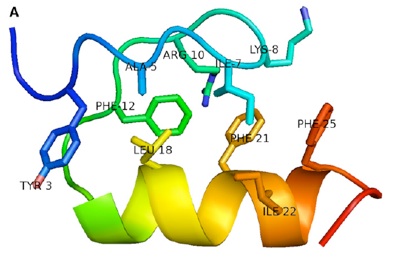Our interest in protein engineering focuses on enhanced stability of designed protein secondary-structure scaffolds to force the particular sequence chosen to fold into the desired three-dimensional target. Initially, we have been involved in design and experimental validation of semi-rigid secondary structure mimetics.
-
1.Helical peptidomimetics - Protein helices are often used as recognition motifs in protein/protein and protein/nucleic acid control systems. As such, drug-like mimetics has potential therapeutic utility. We have designed and synthesized substituted phenyldipyridyl helix mimetics for this purpose (Bourne, G.T., Kuster, D.J., and Marshall, G.R. 2010. Bipyridal-Based α-Helical Mimetics. Chemistry Eur J published online).

2.β-Hairpin scaffolds - Evaluation of a “designed” β-hairpin FSD-1 as a potential scaffold led us to conclude that its stability was limited at best (Feng, J.A., Kao, J., and Marshall, G.R. 2009. A second look at mini-protein stability: analysis of FSD-1 using circular dichroism, differential scanning calorimetry, and simulations. Biophys J 97(10): 2803-2810).

